Enharmonic equivalent notes and scale is an essential concept in music theory. Without it, it’s hard to understand why certain keys have only flats or only sharps. Just before we dive into this concept, let’s take a lightning quick look at the western music alphabet.
In Western music, we use the musical alphabet. The musical alphabet consists of seven different letters:
A B C D E F G
However, with the use of accidentals, we can expand this into twelve degrees.
Twelve tone equal temperament
Traditional notation in western music theory follows the twelve tone equal temperament. These twelve pitches are as follows:
A Bb B C Db D Eb E F Gb G Ab OR A A# B C C# D D# E F F# G G#
More than twelve notes
As you can see, between these two scales there are more than twelve notes. These extra notes are called enharmonic equivalents.

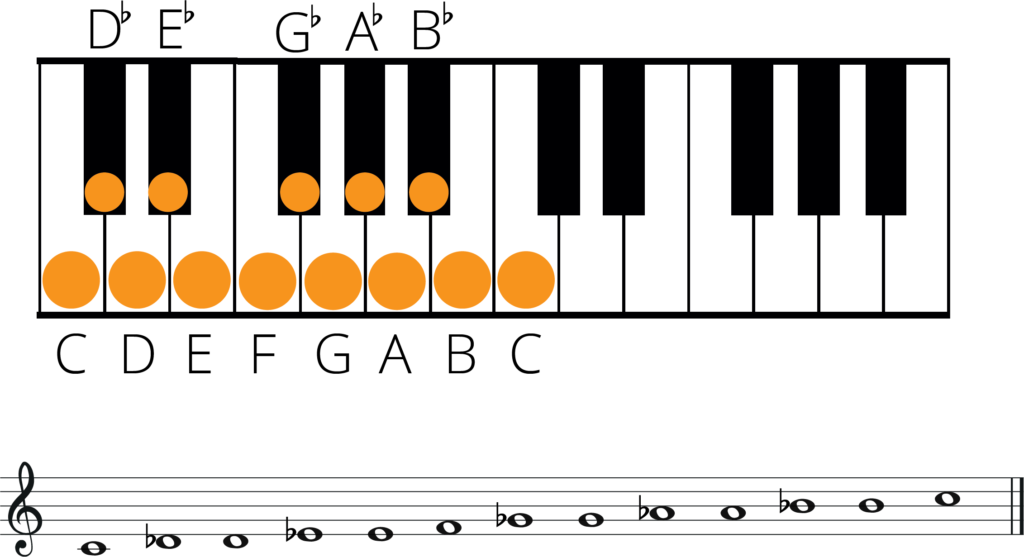
Both of the scales you see above are examples of the chromatic scale. Each of these twelve tones are the same pitch but are spelt differently. These notes that are spelt differently are called enharmonic equivalent notes.
An enharmonic equivalent note is a note that has more than one alternate name. Enharmonic equivalent notes are important for different reasons, but mainly so that the performer finds the music notation easier to read.
Enharmonic Equivalent Notes
Same Note
An enharmonic equivalent note is a pitch that has more than one name. For example, the notes G# and Ab are exactly the same note. Take a look at the piano:
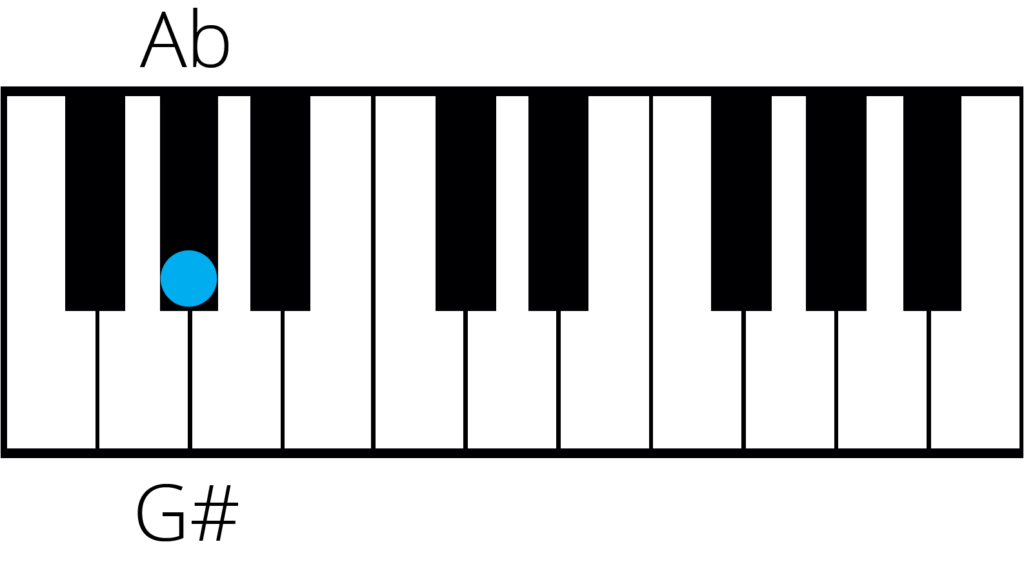
Similarly, Eb and D# are also the same note…
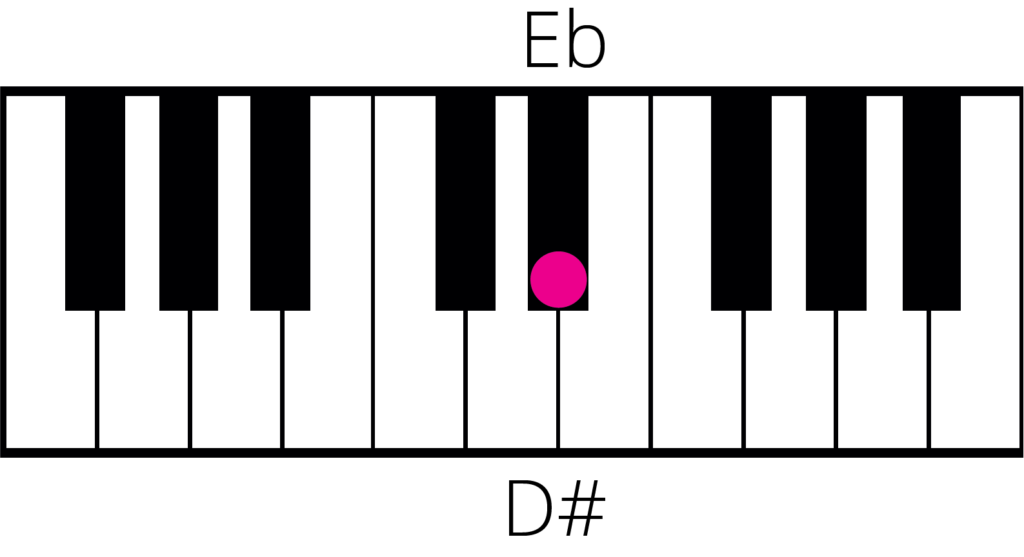
Remember a flat lowers a note by a half step and a sharp note raises a note by a half step.
We use these different note names depending on the context of particular notes in the piece of music.
If for example you are in the key of E major, this key has a keys signature of four sharps (F#, C#, G#, D#) and so it would not make sense to use E flat.

Similarly, if you are in the key of Eb major, this has a key signature of three flats (Bb, Eb and Ab) it would not make sense to use D#.

Enharmonic equivalents are useful to think about in the context of minor keys. In music theory, we have two different types of minor key. The harmonic minor and the melodic minor. In the harmonic minor we raise the seventh note and in the melodic minor, we raise the sixth and seventh note. Raising means to sharpen the note.
Let’s take the key of E harmonic minor. The seventh note of this scale is D, if we raise this note, it becomes D sharp. It would not make sense to make this D# and Eb in the context of E harmonic minor as E minor is a sharp minor. The key signature of the scale you are in is a great visual distinction when deciding what note to use.

When you compose music it is important to think about the key you are writing in to ensure you use the correct enharmonic spelling.
Enharmonic equivalents can also be double sharp or double flats.
Remember, double sharps are notes that are raised by two half steps and double flats are lowered by two half steps.
Take for example the note A double sharp. An A double sharp is in fact the enharmonic equivalent of the note B.
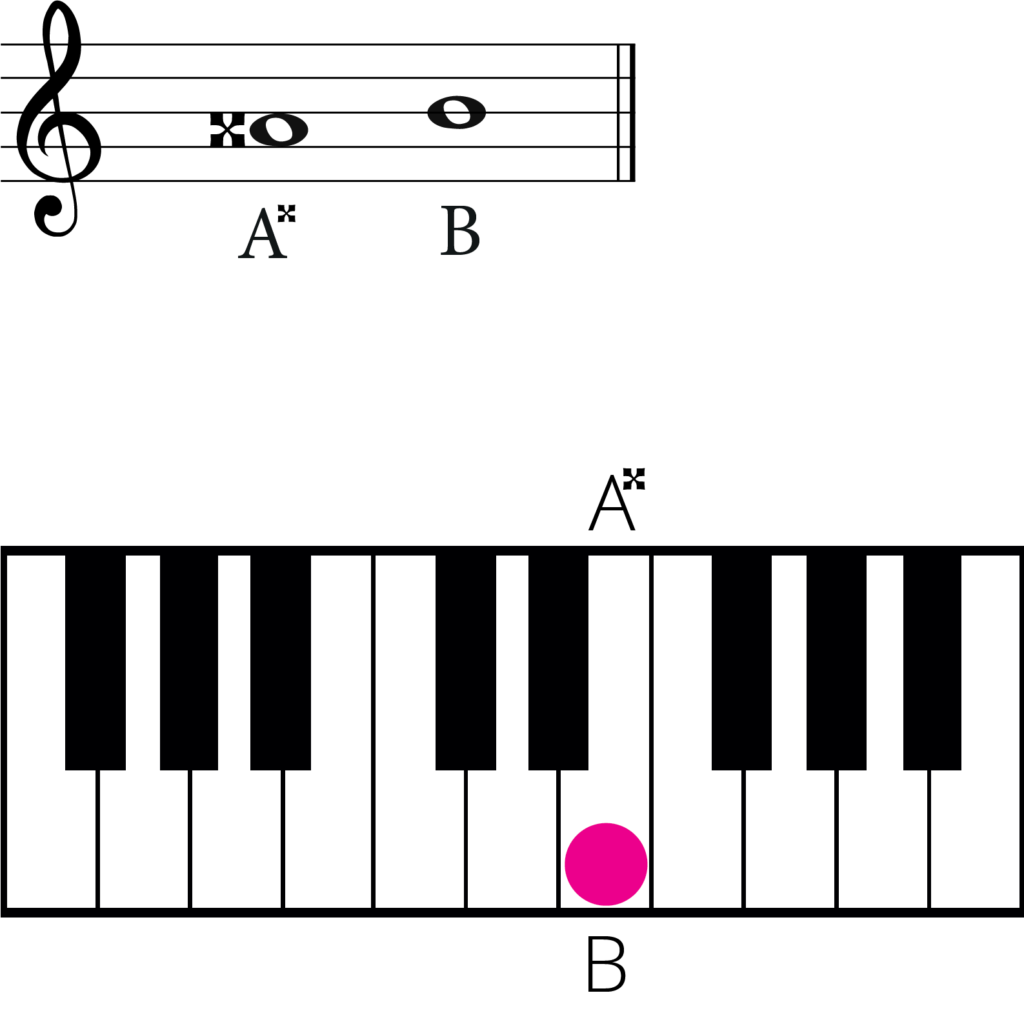
B double flat is an enharmonic equivalent of the note A.
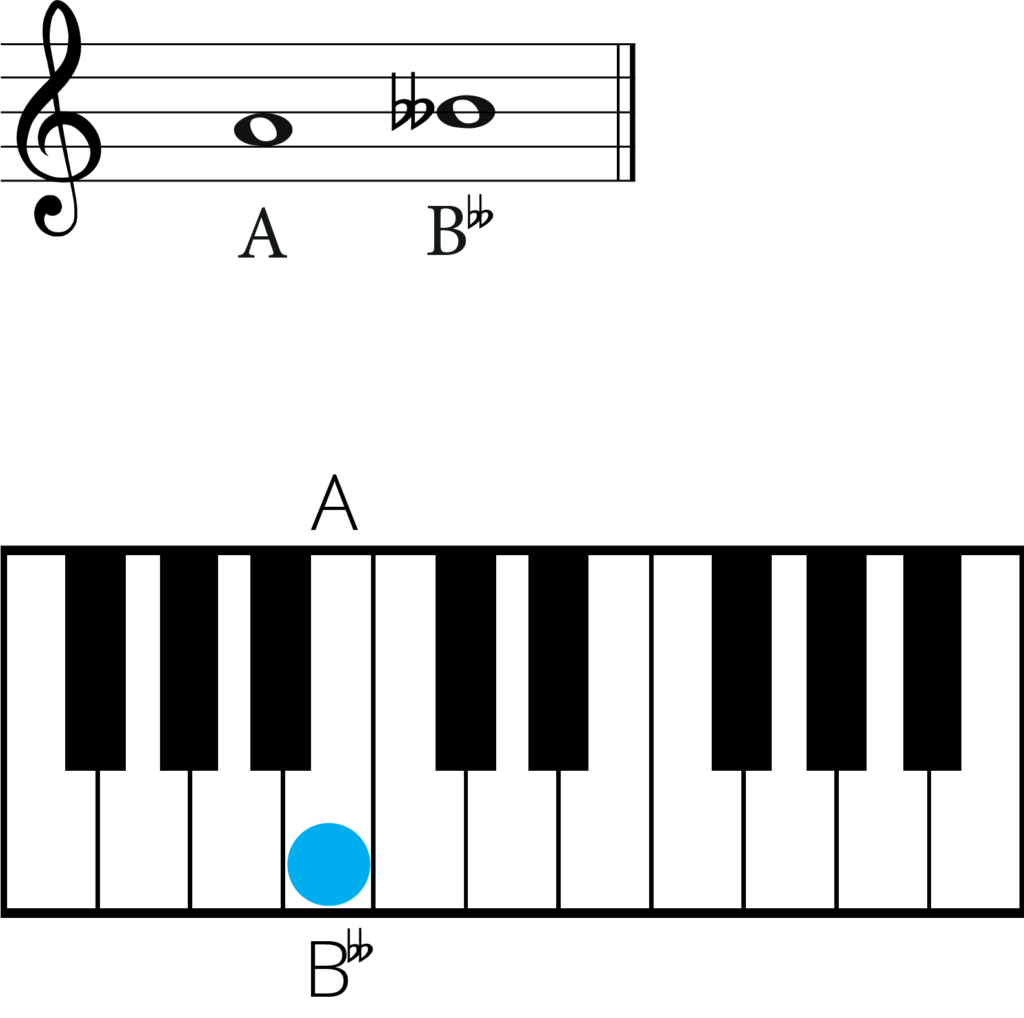
As well as having enharmonic equivalent notes, we can also have enharmonic equivalent scales.
Enharmonic Equivalents – Scales
Enharmonic equivalent scales work in exactly the same way as enharmonic equivalent notes, in fact it is just a collection of enharmonic equivalent notes!
Take for example the note F#. The enharmonic equivalent of this note is Gb.
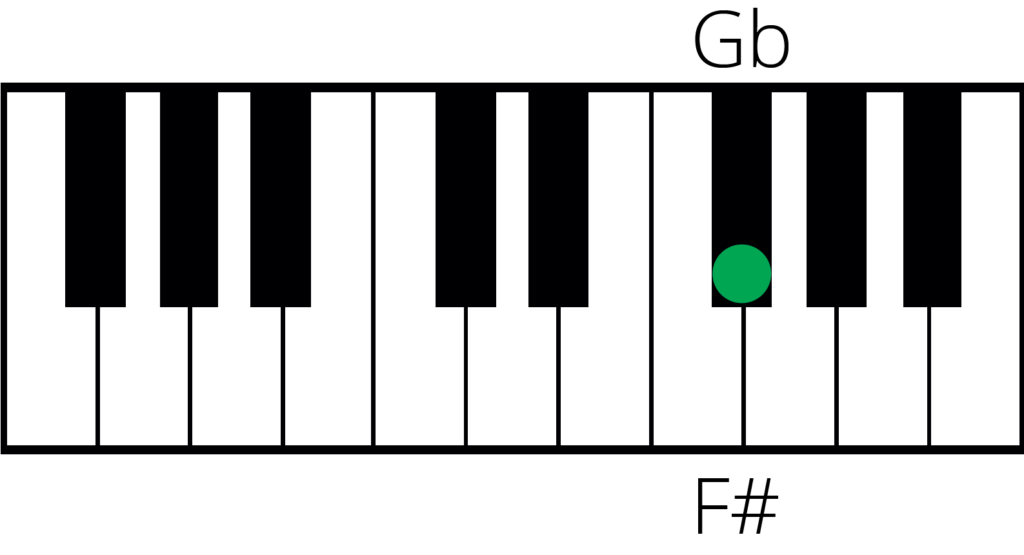
This can then be expanded into the scales.
The notes of the F# major scale are F#, G#, A#, B, C#, D#, E#, F#

The notes of the Gb major scale are Gb, Ab, Bb, Cb, Db, Eb, F, Gb

Notice how each note is an enharmonic equivalent? If you compare the two scales on the piano you can see that they are in fact exactly the same notes!
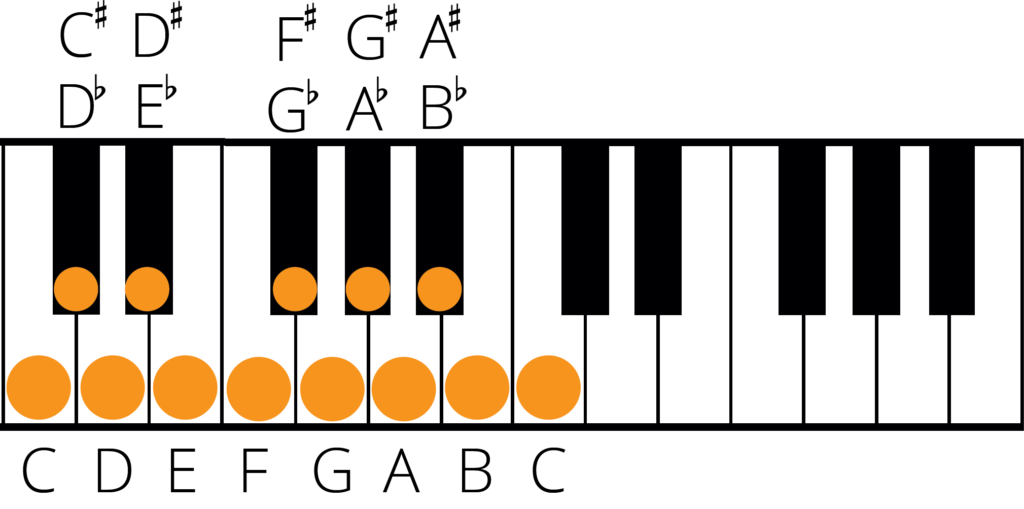
Enharmonic Equivalents – Key Signatures and Chords
As with enharmonic scales, an enharmonic equivalent key signature works in much the same way.
The F# major scale as we saw earlier has a key signature of six sharps. The enharmonic equivalent key is the Gb major scale and this key has six flats.
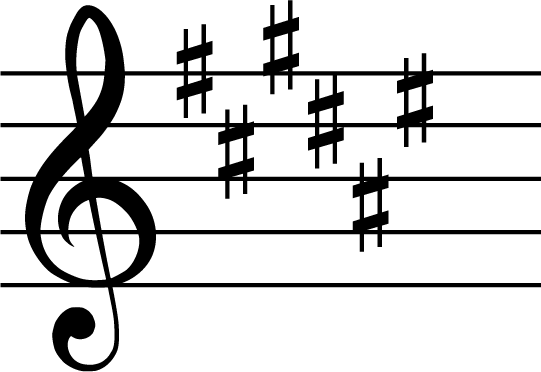
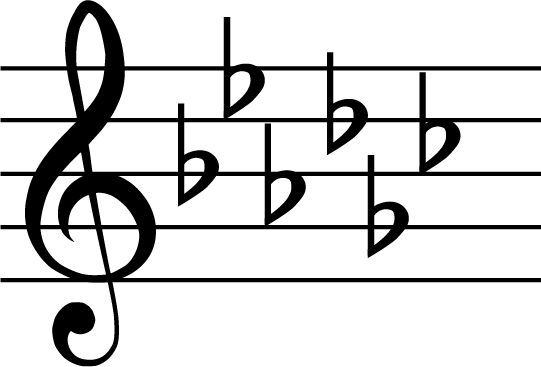
Another example would be C sharp major which has a key signature of seven sharps. The enharmonic equivalent key is D flat major and this has a key signature of five flats.

Both of these scales consist of notes that are the same exact pitch but are represented differently with alternative accidental signs. In other words, they are the same but are spelled differently.
Which scale you use depends very much on your musical passage and the key relationships. It will also depend on which key signature is nicer to read! I think you’ll agree that you would rather play in D flat major than C sharp major!
The chords within these keys follow the same rules.
The tonic chord of D flat major will sound the same as the tonic chord in C sharp major.

Enharmonic Equivalents – Intervals
An enharmonic intervals are slightly different to enharmonic equivalent notes but they follow the same principle.
An interval is the distance between two pitches. An enharmonic interval is two notes that are the same distance apart but spelled differently.
Lets look at the notes F and A. These two notes are a major third apart. The enharmonic equivalent of the note A is B double flat.

The two intervals above will sound exactly the same, but the first interval is a major third and the second interval is a diminished fourth. Learn more about this with our intervals articles.
Below you can see a chart of enharmonically equivalent notes:
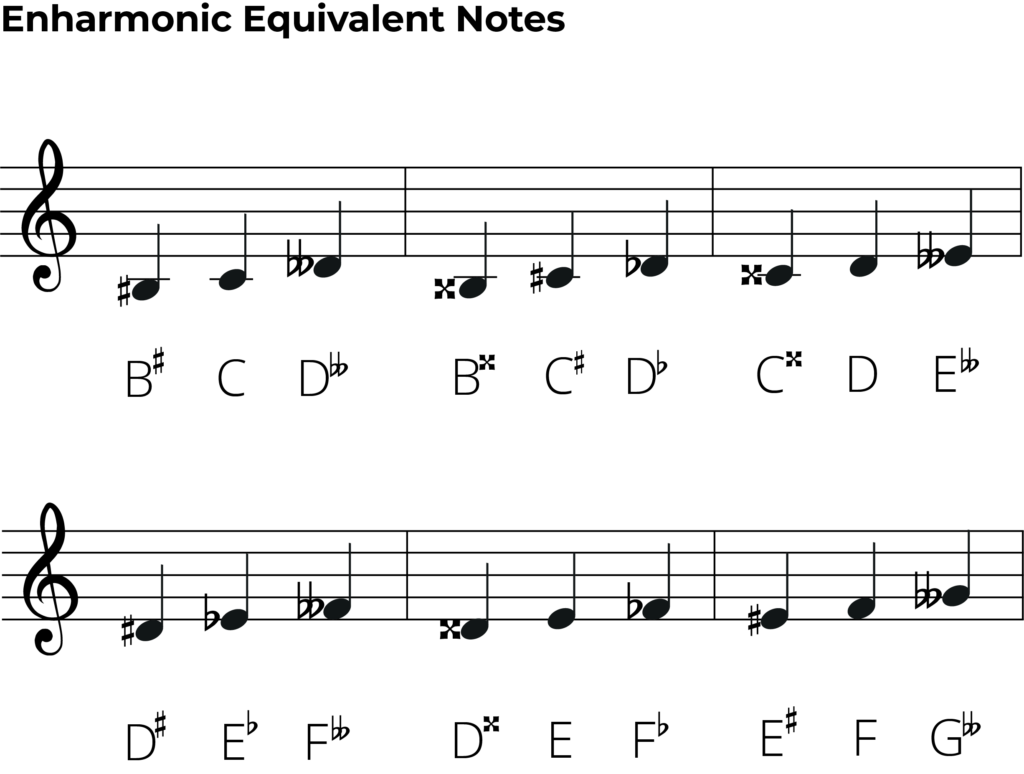
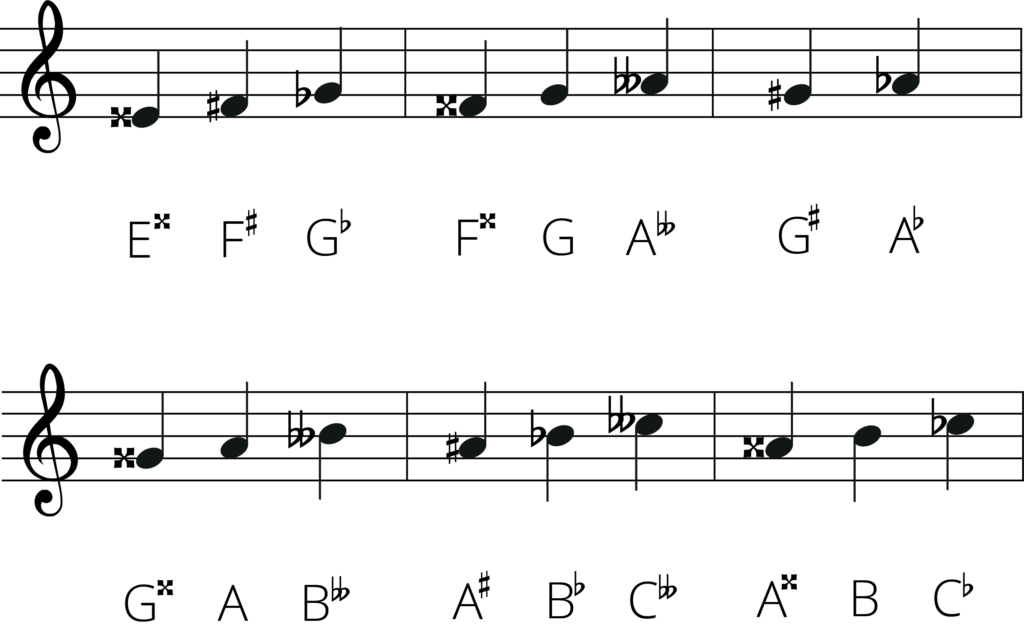
Enharmonic equivalents before the romantic period
Western music today and since the romantic period of music, we have developed a common tuning system. This is the most common tuning system you will see around today and is where the twelve tone equal temperament comes from.
Prior to this, each of these notes would have slightly different pitches and therefore would note be considered enharmonic. You can also see this within experimental musicians music where they make use of the microtonal scales. However, it is assumed that advanced musicians that play these scales are using a flexible pitch instrument such as the voice or a string instrument that is able to show these slight deviations in pitch.
How to Write The Chromatic scale
When writing out chromatic scales in music theory, it is important to know how these are typically spelled.
In a melody ascending chromatically, you will most commonly use sharps. In a melody descending chromatically, you will most commonly use flats.
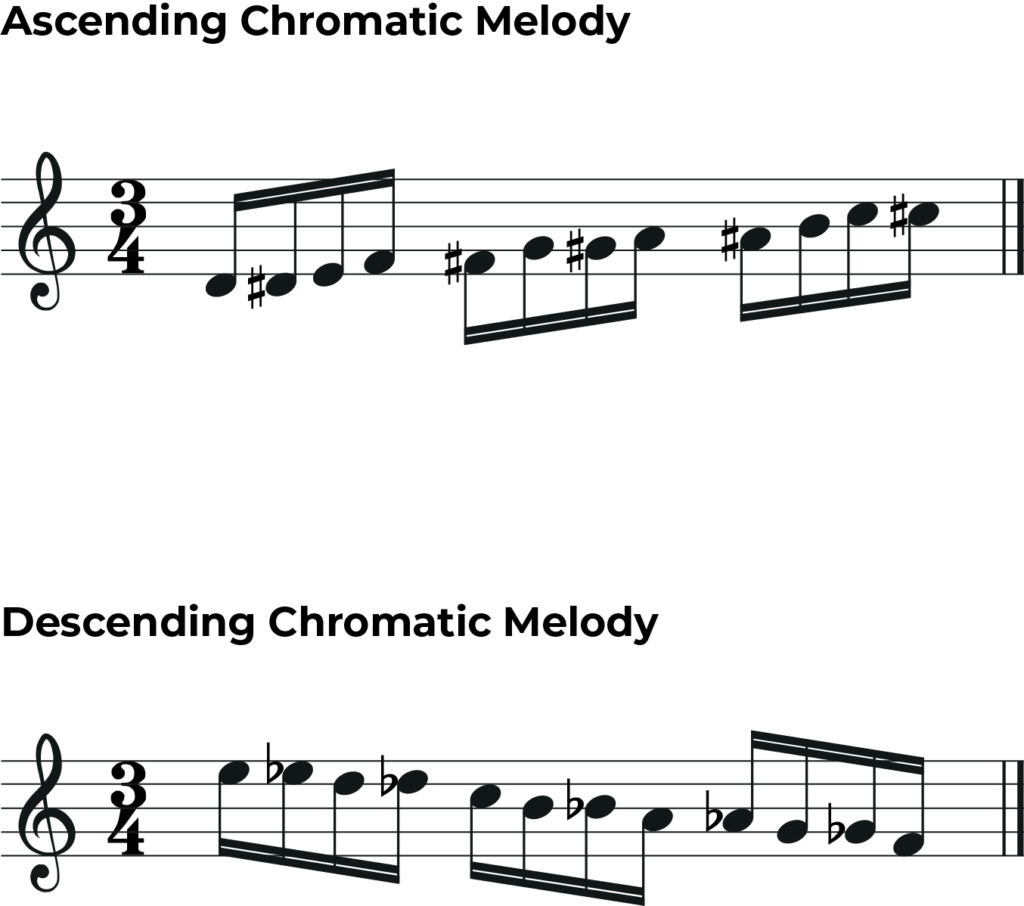
Enharmonic equivalents are very useful in music theory as they allow you more flexibility when writing music. Depending on the key of your music, you can write the same pitches but in a different way.
What’s next….?
- Learn more about music theory with our beginners’ guides: tones and semitones, the grand staff, reading music notes.
